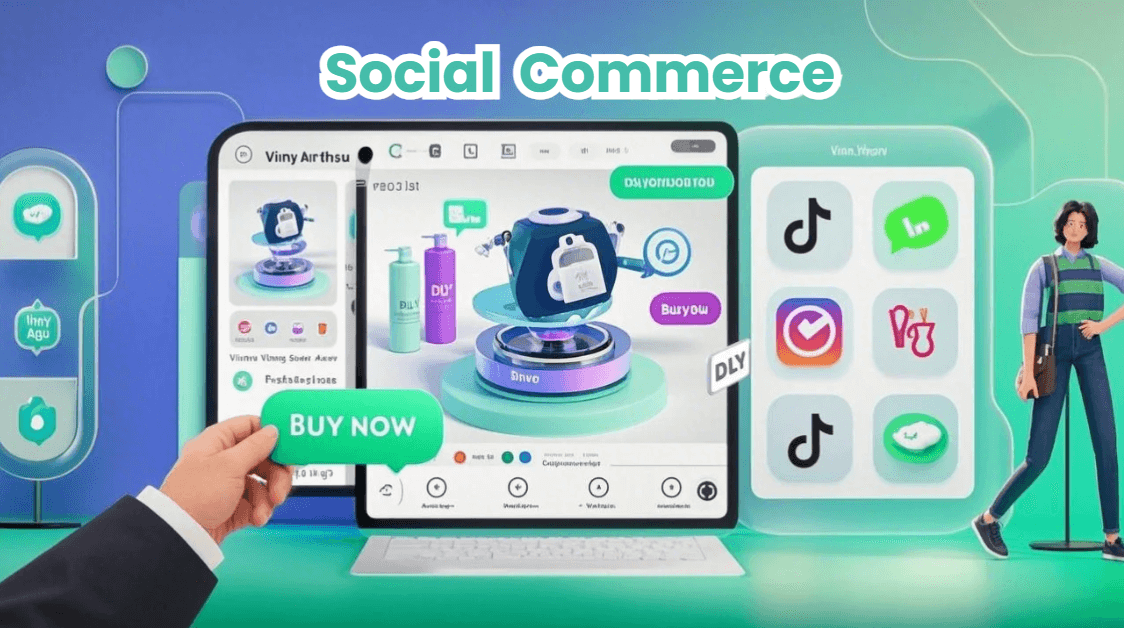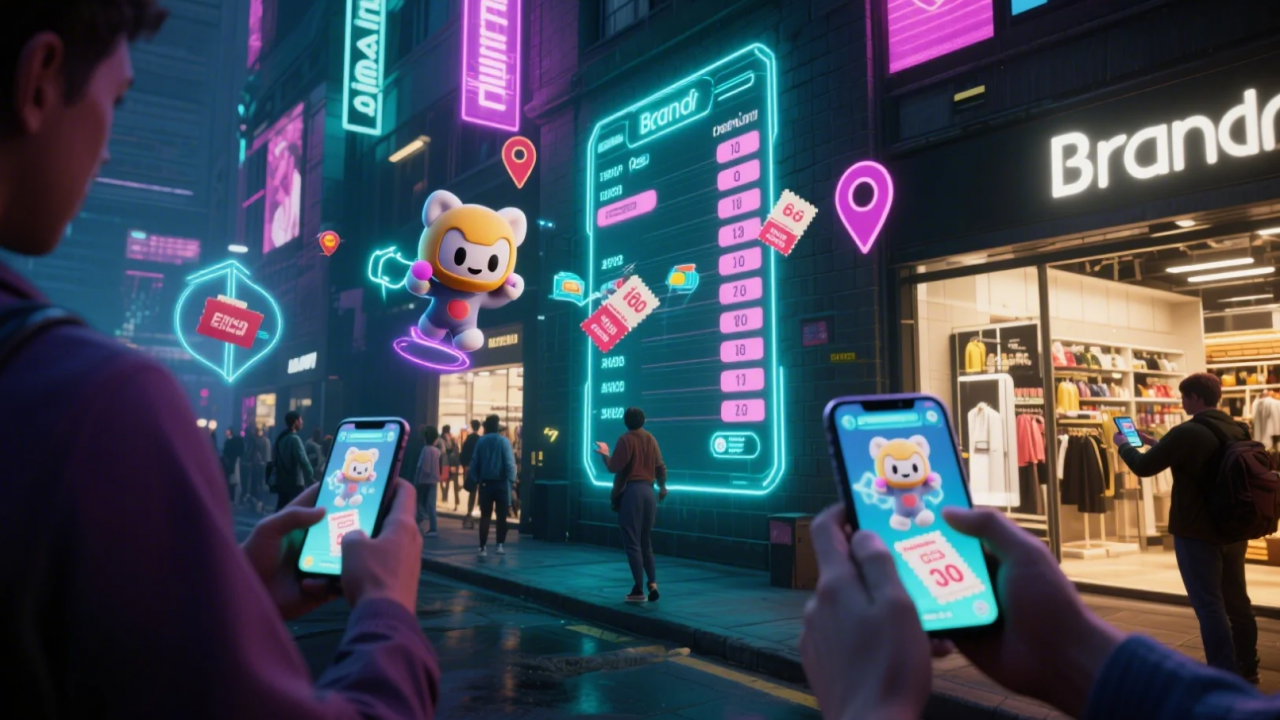Social commerce is not just a trend-setter; it also creates opportunities in the digital marketing landscape. It artfully intertwines digital media with e-commerce, allowing enterprises to widen their consumer reach. It allows them to engage with customers directly, enabling new modes of selling within social media platforms. With more conscious consumers and the rise of online shopping, social commerce is changing how brands engage with their consumers and increase sales.
What is social commerce?
Social commerce implies the process of direct buying and selling of products and services within social media platforms. It contradicts the traditional e-commerce selling methods, where the users are redirected towards an external website. Social commerce, on the other hand, integrates the whole purchase process within the social media platform. In this way, brands can interact, talk, and facilitate conversions without requiring their customers to leave their preferred social media platforms. It makes social commerce an attraction both for businesses and consumers due to convenience and engagement-driven sales. That is why social commerce has led to higher conversion rates while building a credible and loyal consumer base.
Rapidly growing trend of social commerce in digital marketing
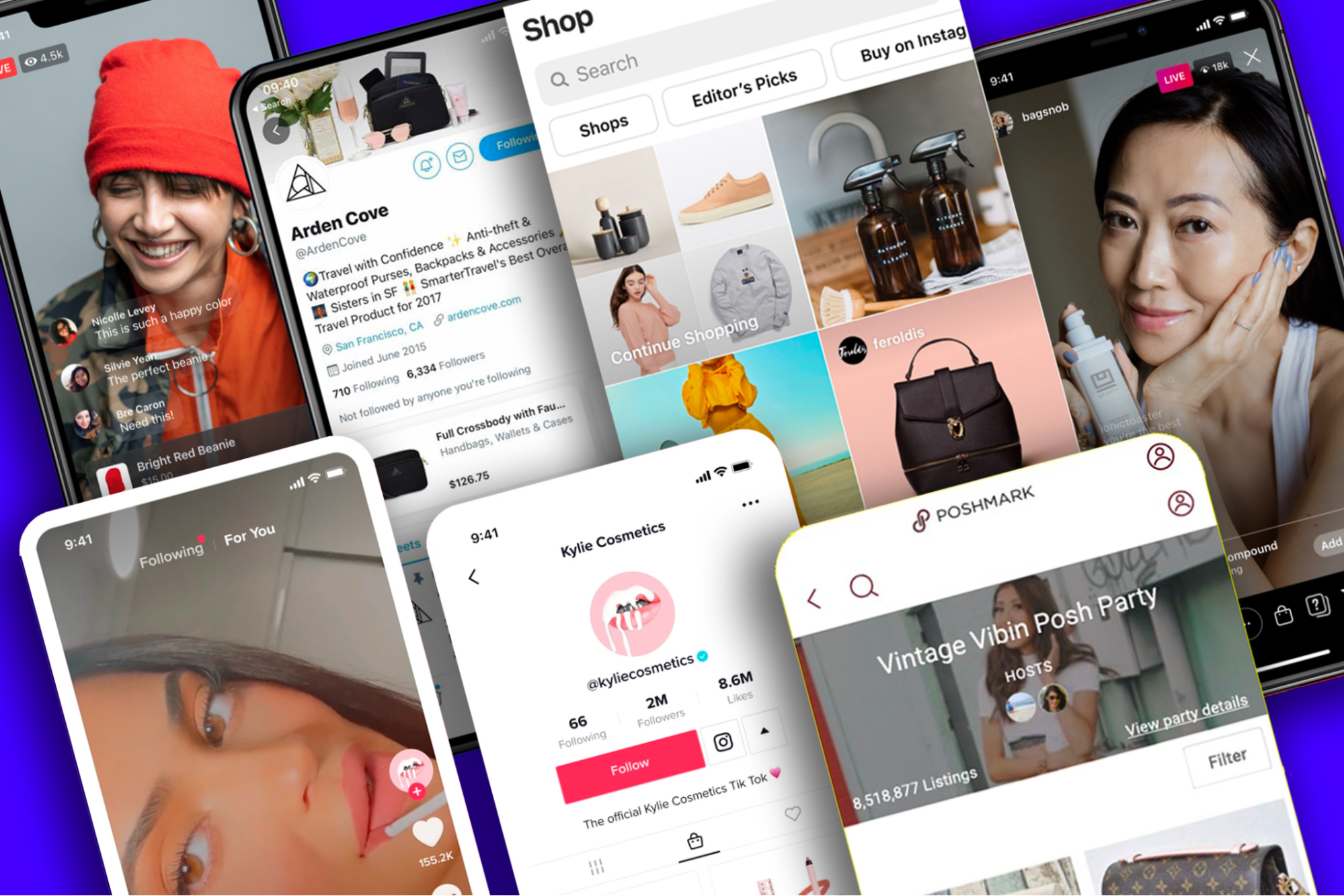
Source: AdAge
The digital marketing landscape has been continuously evolving since the start of its journey with social commerce emerging as one of the most important aspects of digital marketing over the years. Thanks to its sophisticated reach and targeting algorithms, social media has positioned itself as a must-have for brands looking to grow their online presence and visibility.
As consumers’ choices are leaning more towards influencers’ recommendations, businesses now have to utilize the power of user-generated content, and AI-driven personalization tools to enhance brand engagement and conversion rate. Moreover, social commerce has pushed brands to create engaging experiences via interactive content. These interactions lead to stronger customer relationships and repeat purchases.
How does social commerce work?
Social commerce is an amalgam of content marketing, influencer marketing, social interactions, and direct transactions. Brands provide their users with interactive content, highlighting their products and services via acknowledged influencers, and interactive elements while delivering a smooth online shopping experience. Furthermore, advanced features like shoppable posts, live shopping events, and integrated payment options further simplify the purchase. Hence, customers can easily explore and buy their favorite products within the same platform. In addition to this, recommendations given by AI and chatbots give a personal touch, enhancing customer support. Collectively, all these elements work in a symphony to encourage customer satisfaction and increase sales.
Best social commerce platforms and strategies
TikTok
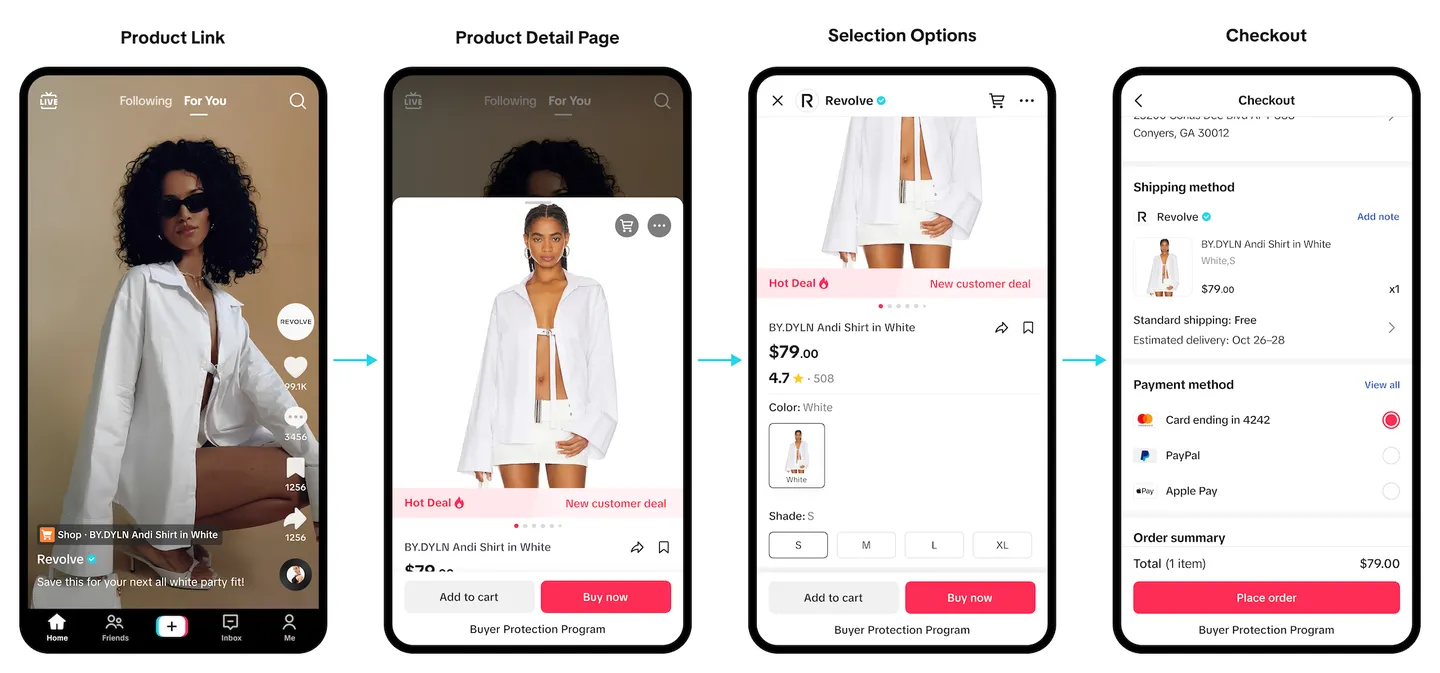
Source: Forrester
TikTok has become a powerhouse of social commerce with its short-spanned, engaging, and entertaining content. Its algorithms promote creativity and trendy user-generated content. Brands are using this platform to market their products through relatable and interactive videos. Some quick make-up tutorials and before-and-after transformations help them to show their products in action. Moreover, the ‘’Shop Now’’ button in the app lets users buy any product right away. In this way, brands that create interactive content, and informative videos can quickly get noticed and can gain traction on TikTok.

Source: Tagshop
Facebook also has built-in social commerce features like a marketplace and shop. Brands can host live shopping events and make mini-stores on their profiles. This helps users interact with brands directly, browse their desired products, and buy without clicking away. Some stats show that 87% of customers say that live videos help them decide what aligns with their needs and what to buy. The real-time interactions through live sessions and a user-friendly marketplace make Facebook a great platform for brands to increase their e-commerce sales and conversions.
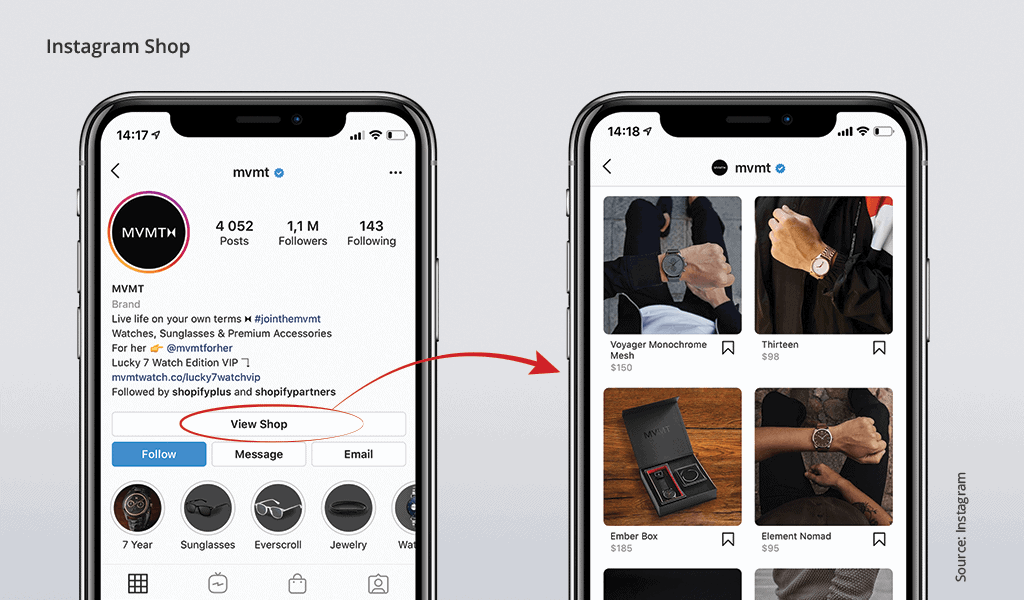
Source: webinterpret
Instagram is perceived as an elite social app where aesthetic visuals and inspiration shine. Brands post high-quality and eye-grabbing photos, reels, and stories that show their products in the best light. They can use stories to post interactive polls, quizzes, and flash sales about products. Nowadays, brands are creating personalized Instagram shops, where users can see all their products with their prices and key features mentioned on the app. Moreover, viewers can buy from shoppable tags in Instagram posts and stories. These features help the customers interact with their favorite brands and discover their desired products with much convenience.
Snapchat

Source: beautybusinessjournal
Snapchat is an app that is famous with Gen Z and younger millennials for its playful content. Brands are using this quality of Snapchat to present and market their products through interactive AR filters. Using these filters, users can virtually ‘’try on’’ their favorite makeup products and accessories like glasses and scarves. The ‘’Spotlight’’ feature of the app is great for viral challenges. It helps to create a sense of urgency in buyers by sharing behind-the-scenes snaps or exclusive deals. The shoppable filters and ads of Snapchat allow customers to access the products and make purchases easily.
Rednote

Source: morethandigital
Rednote, also known as Xiaohongshu, is a rising lifestyle and social commerce platform in China. It blends the power of social media with online shopping to help e-commerce brands get more recognition. Users share their honest product reviews and tutorials about the products they have used in real life. Collaboration with Key Opinion Leaders (KOLs) on the app helps brands boost their credibility. In this way, by using word-of-mouth marketing and user-generated content, Rednote is becoming the best choice for global and domestic brands to reach wide Chinese audiences and markets.
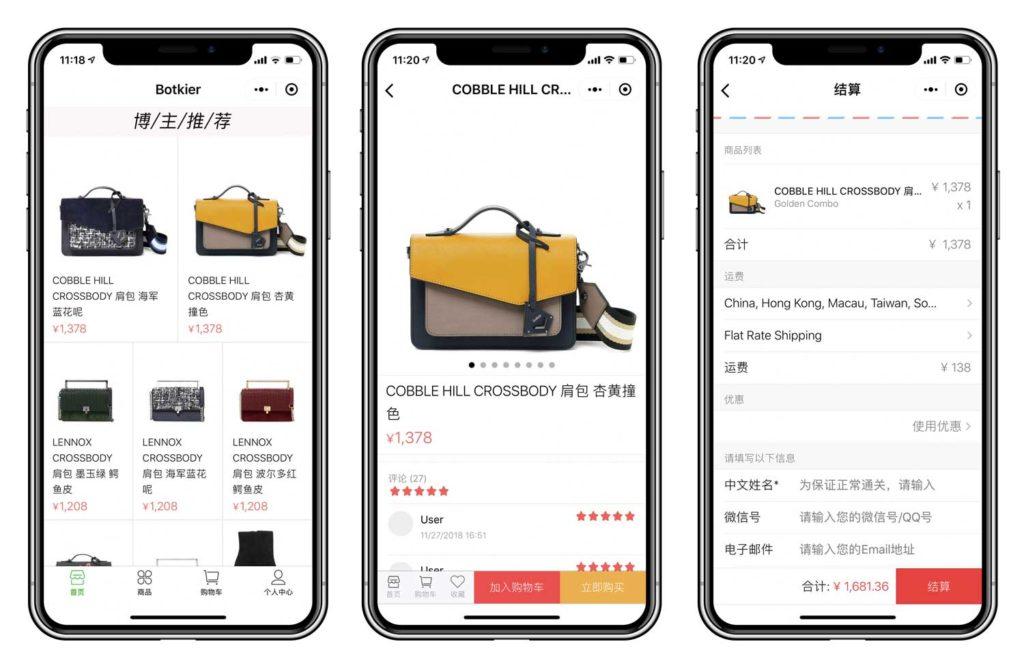
Source: walkthechat
WeChat is gaining all the dominance in the digital marketing terrain of China. Within the app, brands can create Mini Programs to market and sell their products. They can create interactive features like AR-powered try-ons, in-app integrated payment systems, and host live shopping events. This helps brands present their offerings to customers in an interactive environment. Moreover, WeChat has a robust and top-notch ecosystem that makes sure that customers can interact with brands at multiple touchpoints. This shows that using WeChat has become a must for e-commerce brands to target Chinese customers.
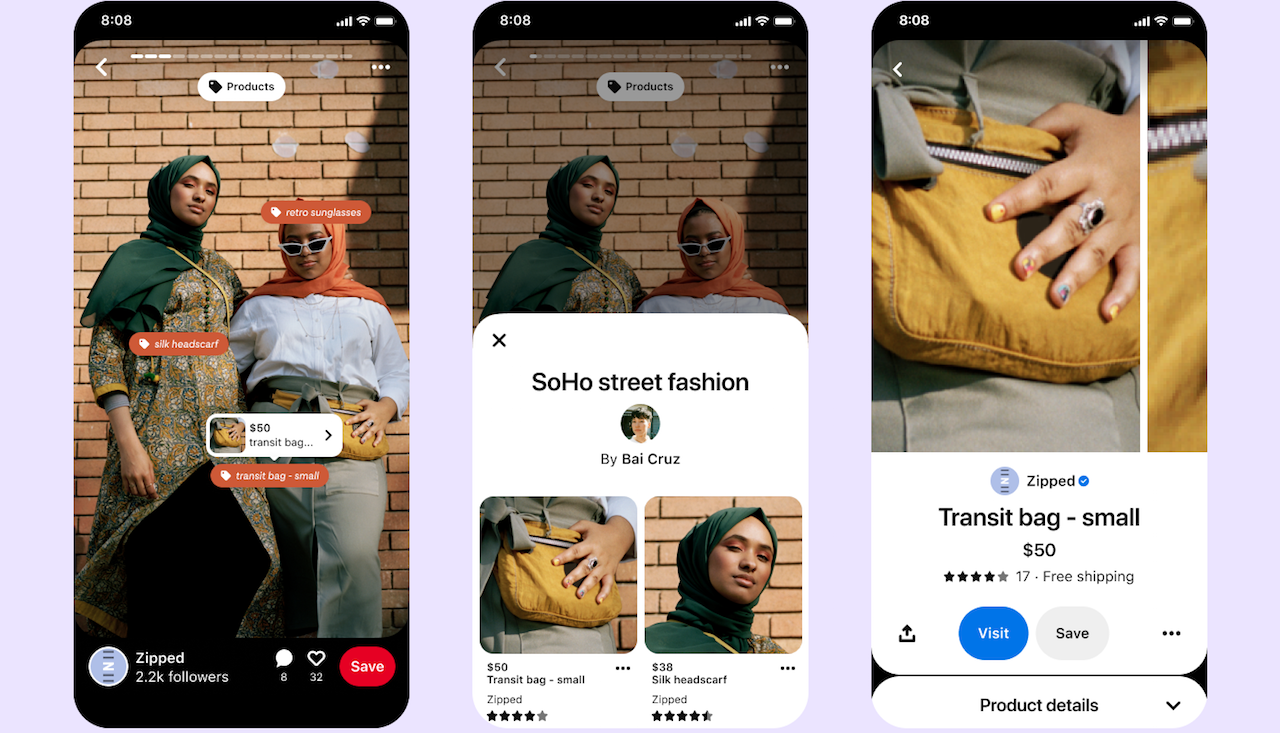
Source: glossy
Pinterest has rolled out a cool feature called “buyable pins” that lets users buy products directly from posts made by brands. We all know Pinterest for its aesthetic visuals, but the platform is upgrading. It has created its own new ways to present shoppable posts. The goal is to create a super mobile-friendly, safe, and easy space for users to make purchases. With the new shoppable pin feature, Pinterest takes social commerce to a whole new level. This helps brands increase sales without creating extra strategies for marketing.
Benefits of social commerce for businesses
Helps brands widen their reach
Social commerce makes it easy for brands to advertise and sell their offerings through social media. It helps brands target their niche markets and boost their visibility. The brand’s capability to interact with its potential consumers in real time creates strong B2C relationships.
Makes shopping experience interactive and smooth
Social commerce makes online shopping more interactive and enjoyable due to its advanced features like AR try-ons, and live streams. With social commerce in action, brands can avoid cart abandonment and can boost sales via high consumer engagement.
Gather data on your audience
Using consumer trends, social commerce can tune advertising strategies. Personalization of the brand, as well as data conversion from transactions, can assist in decision-making. These approaches may strengthen the overall strategy of the business and optimize the spending on other major resources.
UGC content as social proof
User-generated content (UGC) is a good example of social proof. Reviews, endorsements, and influencer testimonials help build credibility, which affects the client’s decision. Allowing customers to review their products honestly aids in establishing an appropriate relationship between the brand and prospects.
Successful social commerce examples
Burberry
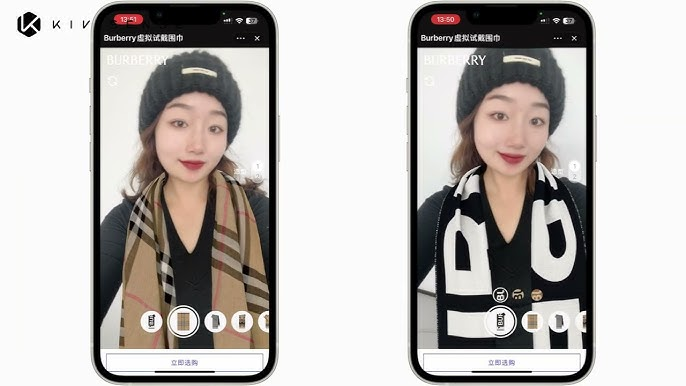
Source: Kivisense Youtube
Burberry has successfully implemented social commerce by providing its users with a luxury shopping experience. Featuring their augmented reality try-ons, and live fashion shows with clickable links enhance the online shopping experience. This unique approach has augmented Burberry’s potential to reach a younger audience by making its digital presence unique and memorable. You can virtually try on the Burberry winter scarf collection on Kivisense and can sort your winter wardrobe beforehand.
Burberry has launched this experience on the WeChat Mini Program. These are simple and lightweight programs within WeChat. Brands can use them to offer things like AR try-ons, live streams, and smooth payment options through WeChat Pay. Users can not only explore and interact with products but also make purchases very easily. This makes shopping feel more interactive and social.
Rare Beauty

Source: medium
Rare Beauty, a famous makeup brand by Selena Gomez, is a good example of how social commerce can help you connect with customers more easily. The brands use Instagram and TikTok to market and sell products through relatable and genuine content. It uses these pages to share makeup looks and tutorials and lets buyers shop directly from the apps. Through these social media platforms, Selena opens up and shares her struggles with social media, which makes the brand feel more reliable and genuine. Moreover, customers sharing their makeup looks on social media adds to more user-generated content (UGC), which builds trust and boosts brand awareness.
Xiaohongshu/Rednote

Source: wpic
Xiaohongshu, or Little Red Book, is a Chinese app that mixes social media and online shopping. It has a focus on real people sharing their honest thoughts. Users on the app post reviews, tutorials, and recommendations about products they have tried, everything from makeup to travel. It’s not just about marketing, it’s regular people and influencers talking about what they actually like and trust. The app has a big lifestyle vibe, with posts about fitness, fashion, and travel. Through authentic UGC content and interactions, brands can connect with customers more effectively.
For example, Perfect Diary, a beauty brand, has used Xiaohongshu to improve its market awareness. It teams with influencers to encourage everyday users to share their makeup looks and reviews about products. This grassroots approach has helped the brand to get more impressions and become one of China’s top beauty brands.
What are the future trends in social commerce?
The future of social commerce will be shaped by technological advancements and based on consumers’ needs and expectations. Some key trends are AI-driven customization, AR shopping experiences, one-step payment solutions, and the rise of live shopping events. In addition to this, social media platforms will continue to innovate with social tokens and blockchain technology to improve transparency and transactional security. Those businesses that embrace and stay up-to-date with these trends will be well-positioned to capitalize on the expanding social commerce market.
Conclusion
Social commerce has transformed the traditional way of consumer engagement. Synergizing the power of social media and e-commerce, brands can create smooth, interactive, and customized shopping experiences. As these trends consistently evolve, businesses need to adapt and leverage these modern strategies to be competitive and relatable in this digital era. Kivisense is a leading MarTech company that uses top-notch techs like AR, VR, and AI to develop innovative WebAR solutions for e-commerce and digital marketing. So, contact us now to transform your social commerce strategy with our futuristic and highly advanced tech solutions.

